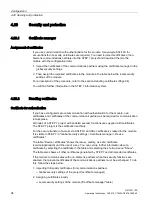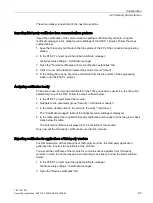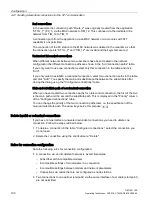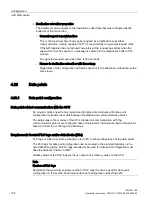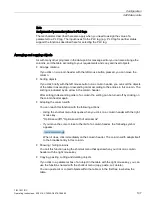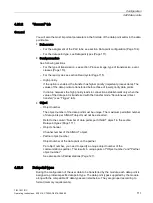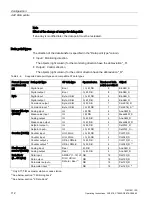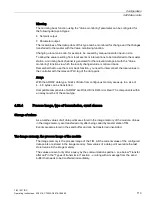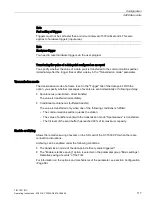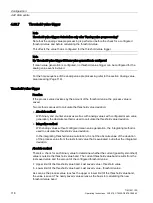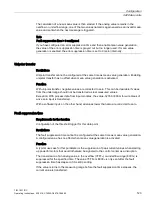
Configuration
4.22 Data points
TIM 1531 IRC
108
Operating Instructions, 02/2018, C79000-G8976-C468-02
Exporting and importing data points
To simplify the engineering of larger plants, you can export the data points of a configured
module and import them into other modules in the project. This is an advantage particularly
in projects with many identical or similar stations or data point modules.
The export / import function is available when you select the module for example in the
network or device view and select the relevant shortcut menu.
Figure 4-11 Shortcut menu of the module
When it is exported the data point information of a module is written to a CSV file.
Export
When you call the export function, the export dialog opens. Here, you select the module or
modules of the project whose data point information needs to be exported. When necessary,
you can export the data points of all modules of the project together.
In the export dialog, you can select the storage location in the file directory. When you export
the data of a module you can also change the preset file name.
When you export from several modules, the files are formed with preset names made up of
the station name and module name.
The file itself contains the following information in addition to the data point information:
●
Module name
●
Module type
●
CPU name
●
CPU type
Editing the export files
You can edit the data point information in an exported CSV file. This allows you to use this
file as a configuration template for many other stations.
If you have a project with many stations of the same type, you can copy the CSV file with the
data points of a fully configured module for other as yet unconfigured stations and adapt
individual parameters to the particular station. This saves you having to configure the data
points for every module in STEP 7. Instead, you simply import the copied and adapted CSV
file to the other modules of the same type. When you import this file into another module, the
changed parameter values of the CSV file are adopted in the data point configuration of this
module.

